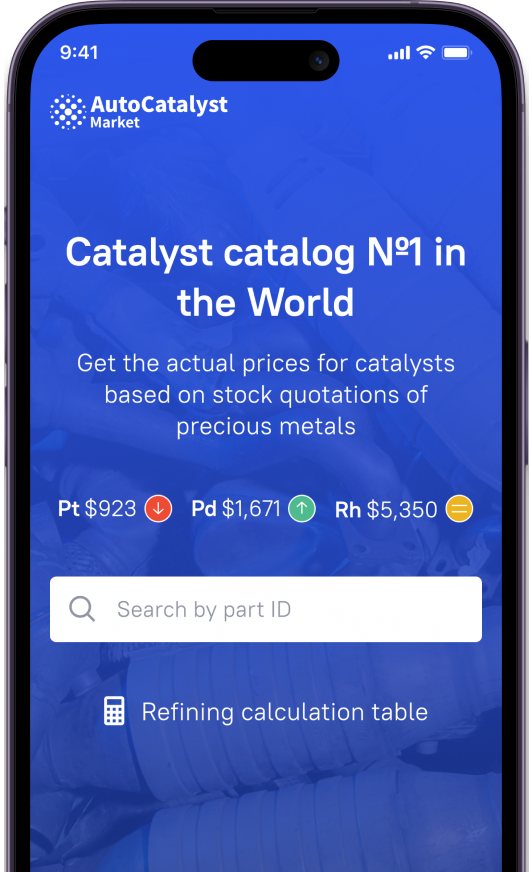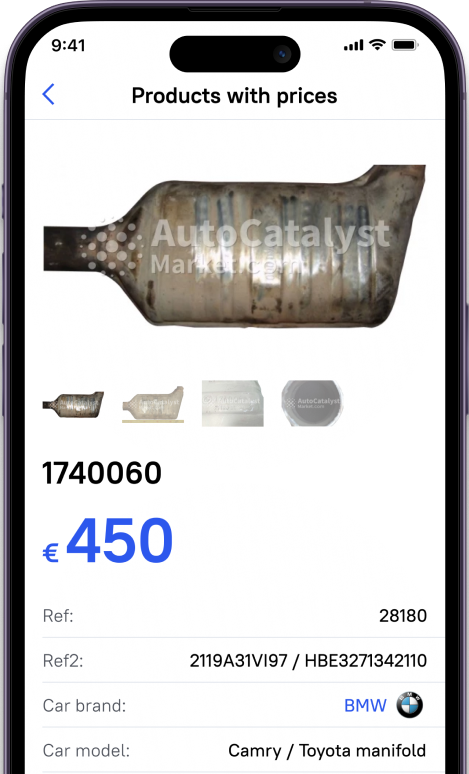- Why Catalyst Recycling Is So Important?
- Why Do People Recycle Their Catalytic Converters?
- Step 1: Assessment Of The Condition Of The Catalyst
- Step 2: Determining The Type Of Catalytic Converter
- Step 3: Regeneration or Recycling?
- Step 4: Final Decision On Whether To Recycle The Catalytic Converter
- Conclusions on Catalytic Converter Recycling
Why Catalyst Recycling Is So Important?
The catalytic converter is a car part that has been around for many years and used to protect the environment from harmful emissions. Starting in the 70s, people began to make catalytic converters to reduce the harmful car's exhausts and emissions. The value of this device cannot be overlooked. Due to the valuable materials inside the “cat” (a popular shortened name), and because of how rare they are, the recycling of a catalyst is such a vital process. Catalytic recycling is supplying the shortage of materials and elements that are very expensive and extremely rare. That is why it is so important to recycle the catalyst.
Why Do People Recycle Their Catalytic Converters?
In a car, catalytic converter contain very costly elements, such as palladium, rhodium, or platinum. The fact that they are expensive is drawing a lot of attention from potential buyers or resellers. There is an entire business built on the recycling and selling the used catalytic converters. People mainly recycle catalysts because they want to extract the valuable elements from the device and sell them for profit. But doing it on your own is a very complicated task. Thus, various companies that are engaged in catalytic converter recycling provide their services to many clients all over the world.
Step 1: Assessment Of The Condition Of The Catalyst
The overall condition of the car catalyst is very important when it comes to recycling process. First thing to do with the catalytic converter is to assess its condition. There are plenty of things that could happen to this device. For instance, a car could have gone into a pothole and the “cat” got damaged. While this could have happened, the internal materials could also be damaged. And if this is the case, then the price of the catalyst will most likely drop. This is just an example of what could go wrong with a “cat”. However, all the possible issues are important to keep in mind because during recycling, some of them might be a vital part that plays role in the total price value.
Step 2: Determining The Type Of Catalytic Converter
During the course of the years, various types of catalysts have been developed. While many car manufacturers improved and designed new technologies, some of the catalysts stayed a bit old-school and didn’t experience many changes. That is why, during the recycling process, it is important to keep in mind the specific model of the device.
Plenty of popular brands will most likely be more pricey and expensive because of the high-quality materials and the name of the brand itself. Because of this, the catalytic converter scrap price list is a great place to find some up-to-date prices and understand which type of the car catalyst can generate the most profit. However, it is not just because of profit. Before deciding to recycle the catalyst, you always need to know what type of device you have and if there will be any additional requirements during the recycling process.
Step 3: Regeneration or Recycling?
People who recycle their catalytic converters sometimes regret their decision due to another option, which is catalyst regeneration. Lots of them simply do not know that such option even exist. The entire process provides and restores the catalytic activity of a spent catalyst. Typically, a person would not bother with regeneration because recycling is simply an easier and faster way to get some extra cash with little time invested. However, regeneration is also a good alternative when it comes to used catalysts as it can bring a new life to your old device.
Step 4: Final Decision On Whether To Recycle The Catalytic Converter
Different catalysts can bring different profits and therefore the choice of what to do with the used catalyst is just as important. A person always needs to consider all the available options. Recycling and gaining some profit from a used catalyst is always a nice thing to keep in mind.
However, regeneration is also a good option if you’re looking to basically resurrect your old “cat”. The final catalytic converter price also always changes depending on the condition, brand and the manufacturer.
All in all, recycling is always a good thing no matter how you look at it. By doing so, you are helping the environment and gaining some additional profit as well. But if you’re looking for a cheaper way of obtaining a rather fresh device, then you can definitely look into regeneration option.
Conclusions on Catalytic Converter Recycling
Summarizing the above, the catalyst is a very useful part that should not be discarded and immediately carried out for recycling. Firstly, you need to check and understand whether it is possible to restore the catalytic converter using regeneration method. If it is affordable, and you want to do it, then the old catalyst can serve you just as a new one for many years to come. The final cost for catalytic converter regeneration always depends on various factors.
Thus, it is sometimes useful for a person to find out some specific details about their device first. Recycling, on the other hand, requires very little knowledge and for the most part, you don’t even need it. Most companies will provide you with every little detail that you need. The process itself will bring you some extra money, and you will do a solid one to our planet as well. Overall, whether you choose to recycle or regenerate the catalyst, there is really no wrong choice here. As both methods are suitable depending on your own specific needs.








































